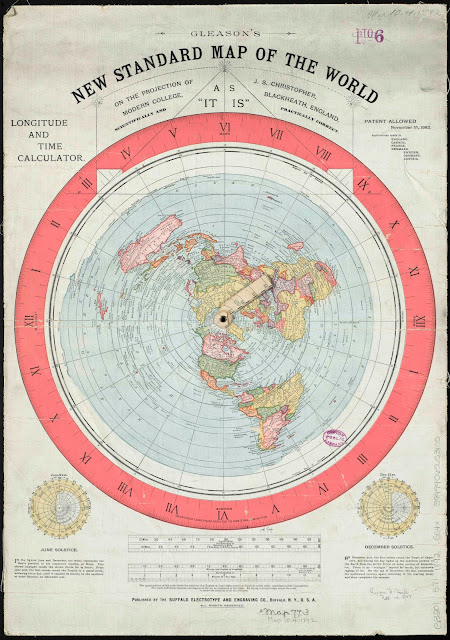There are a few different definitions of curvature and several ways to calculate it. See
curvature on Wikipedia.
You can download the calculator on my other post
here
I also explain the math for distance to horizon and line of sight
here.
I have found a few different methods that are pretty accurate up to around 100 miles. Then there is a more complex method that is accurate up to 3,963 miles which is the radius of the earth. So dust off your old geometry and trig books and let's begin!
Zetetic Astronomy
So the first method I need to mention is from
Samuel Birley Rowbotham. He is mentioned frequently by the Flat Earth Society and his math is used in many flat earth videos. He believed the Earth was flat and published a book recording his experiments called
Zetetic Astronomy, Earth Not a Globe. You can check it out
here.
Rowbotham states that if the earth is 25,000 miles in circumference then the curvature would be 8 inches per mile.
To use his calculation you just square the mileage and multiply by 8. So if you use 3 miles it is 3 squared (9) and multiply by 8 (72), which is 6 feet. Therefore the Earth drops 6 feet in 3 miles.
Pythagorean Theorem
The next method uses the Pythagorean Theorem which says that the sum of the square of adjacent and opposite sides equals the square of the hypotenuse in a right triangle. a² + b² = c².
So we are trying to find the distance the Earth drops down per mile. So the equation would be radius² + distance² = (radius + drop)². If we are trying to find the drop we can change the equation to
√(r² + d²)
- r = drop.
If the radius is 3,963 miles and the distance is 1 mile we can solve the equation.
√(3963² + 1²)
- 3963 = drop.
Putting that into a calculator you get drop = .000126 mi. There are 5280 feet in a mile and 12 inches in a foot. So .000126 * 5280 * 12 = 7.98336 in.
Trigonometry
I might have to apologize to my math teacher for telling her I would never use this information. The next method is the hardest so I'm going to try my best to explain. The next method uses SIN COS and TAN. If you need a way better way of explaining it then go
here.
So if you don't remember, to solve this we use SOH CAH TOA.
Sine = Opposite / Hypotenuse
Cosine = Adjacent / Hypotenuse
Tangent = Opposite / Adjacent
Using this information we can solve the curvature like this
In this example r = radius, d = distance, h = height/drop, L = length, and a = angle. Based off of this we know we find the height by subtracting the length of the triangle from the radius. How do we find that? back to the math!
We need to find the angle of a by using SIN(a) = d/r. Using the inverse of sine gives us the angle a = Sin-1(d/r). Using that we can use COS(a) = L/r changed to find L is COS(a) * r = L. Then we take L and subtract from the radius. Still with me?
The full equation is [r - (COS(SIN-1(d/r)) * r) = L] so let's plug that in. [3963 - ((COS(SIN-1(1/3963))) * 3963)]. If I typed this correctly it comes out to .000126168. Multiply that by 5280 and 12 we get 7.994 inches! We did it!
I apologize if any of that was confusing, I tried my best!



























